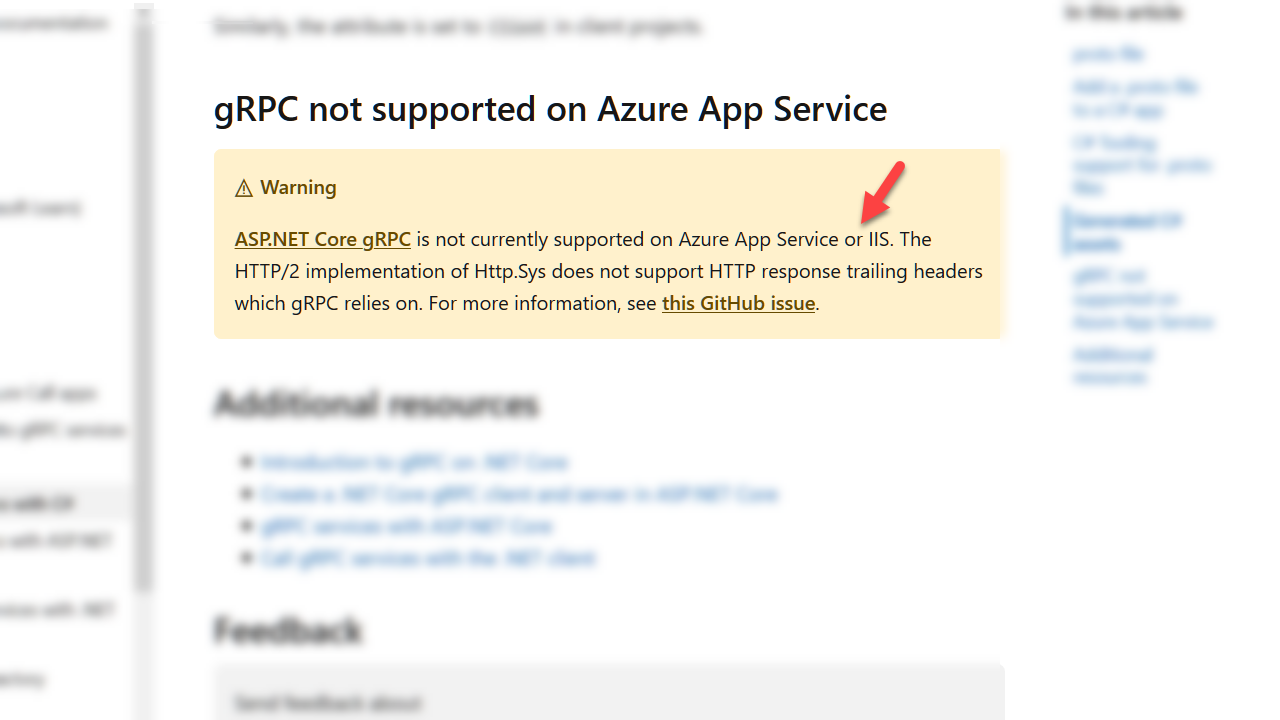gRPC is a framework you can use in ASP.NET Core 3 to build APIs. The gRPC framework offers both advantages and disadvantages compared to the HTTP based APIs we’ve always been able to build using ASP.NET Core controllers. But, there’s one important aspect of gRPC that is often overlooked in the wave of 3.0 evangelism you read in blogs, hear in podcasts, and see in videos and conferences:
gRPC services won't work in IIS or Azure App Services.
IIS and App Services constitute a non-trivial share of production environments for AspNet Core, so it is regrettable that some developers discover late in the development process that gRPC won’t work for them. Only recently has the documentation for gRPC started to include a warning message:

The warning itself is misleading. IIS and App Services have two different problems.
It’s true that IIS cannot current host a gRPC service because http.sys doesn’t support trailing headers. gRPC relies on trailing headers to communicate vital information, like call status. The first sign of trouble here appears when you scaffold a new gRPC service project using Visual Studio. AspNet Core projects typically include the option to develop using IIS Express, but this launch option is not present after running the gRPC scaffolding.
In Azure, Windows based App Services use IIS and have the same http.sys limitation. However, you can’t circumvent the problem by hosting in a Linux or using a custom container. The App Service front-end terminates incoming TLS connections before forwarding unencrypted messages to your App Service worker. Your gRPC service will refuse to communicate over http and return only HTTP 426 Upgrade Required errors.
There’s currently no timetable I can find for either IIS or App Services to make a workable environment for gRPC services. Fortunately, there are other options for hosting gRPC services in Azure and the cloud including using Kestrel directly in a virtual machine or in a Kubernetes cluster.
The bigger issue for me is the reoccurring problem where Microsoft messaging around new AspNet Core features doesn’t consider the realities of production. Another example of this problem was with the original .NET Core release. While Microsoft was promoting the record performance benchmarks of AspNet Core, all of us hosting AspNet Core on IIS were seeing performance numbers worse than MVC 5. The confusion took a long time to clear up.

 OdeToCode by K. Scott Allen
OdeToCode by K. Scott Allen